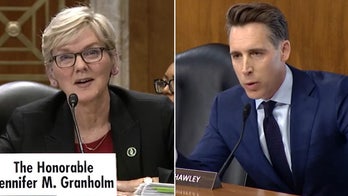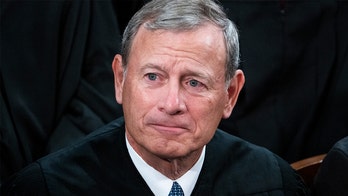
The Pebble Partnership believes a mine near Bristol Bay, Alaska, could produce up to 107.4 million ounces of gold. (AP)
The Environmental Protection Agency on Friday moved against a massive mine project in Alaska which supporters say could contain billions of dollars in gold and copper, delivering a win for environmentalists who claimed the mine could endanger sockeye salmon populations.
The decision on Pebble Mine was highly anticipated, and comes after an EPA report in January found large-scale mining in the Bristol Bay watershed posed significant risk to salmon and could adversely affect Alaska Natives in the region, whose culture is built around salmon.
The agency will now examine whether to block or otherwise restrict the mine project. But that decision alone promises to significantly delay the project; whether the EPA decides to bar construction entirely remains to be seen.
The action, announced Friday, is what supporters of the proposed Pebble Mine have feared. Backers have claimed the project could yield more than 100 million ounces of gold, 80 billion pounds of copper and other precious minerals. Companies have spent millions researching and monitoring the area in an effort to assure the EPA the mine would not cause ecological damage.
But opponents of the mine have urged EPA to take steps to protect the region.
EPA Administrator Gina McCarthy said in a release that scientific study has provided "ample reason to believe that the Pebble Mine would likely have significant and irreversible negative impacts" on the watershed and its salmon. The watershed produces nearly half the world's wild sockeye salmon, a fish that is important for two groups of Alaska Natives in the region, Yup'ik Eskimos and the Dena'ina.
McCarthy said the agency is exercising its authority under the Clean Water Act "to ensure protection for the world's most productive salmon fishery from the risks it faces from what could be one of the largest open pit mines on earth."
However, the company behind the mine defended the project Friday, and said the EPA decision was premature and unprecedented.
“We remain confident in our project and our position," Tom Collier, CEO of the Pebble Limited Partnership, said in a statement. "We will continue to state our case with the EPA as we work through their process. The EPA’s actions today are an unprecedented federal action and reflect a major overreach onto an asset of the State of Alaska. There is a prescribed, science based process for evaluating projects such as Pebble and the EPA has initiated a step that turns this process on its head."
The EPA has rarely used this specific authority, which it can exercise before a permit is applied for. The agency says it has only done so 29 times in the past, and in 13 of those cases the EPA decided to take steps to limit or prohibit activity.
Regional administrator Dennis McLerran said information provided by the Pebble Limited Partnership and Northern Dynasty Minerals Ltd., which are working to develop the Pebble deposit, showed excavation for the mine "completely destroying" an area as large as 7 square miles and that disposal of waste material would require building three impoundments covering another 19 square miles.
In a letter being sent to officials with the state, Pebble Limited Partnership and U.S. Army Corps of Engineers, McLerran also said the EPA's report estimated that discharges of dredged or fill material associated with the footprint of the mine would likely cause "irreversible loss of significant reaches" of salmon- and other fish-supporting streams, as well as extensive areas of wetlands, ponds and lakes.
Tribes and others petitioned the EPA in 2010 to protect Bristol Bay, a request that gave rise to the watershed assessment released in January and Friday's planned announcement.
Friday's action means the corps, state and those behind the mine project will be allowed to submit information to the EPA to show no "unacceptable adverse effects" to aquatic resources would result from mining-related discharges or that actions could be taken to prevent unacceptable effects to waters, according to the letter.
If McLerran is not satisfied with their response, the agency will publish proposed restrictions or prohibitions on mining at the Pebble deposit and gather public comment. There will be a second round of consultation before a final decision is made.
The entire review process could take about a year. McLerran noted that the agency, at any point, could decide further action on its part is unnecessary.
The Associated Press contributed to this report.




